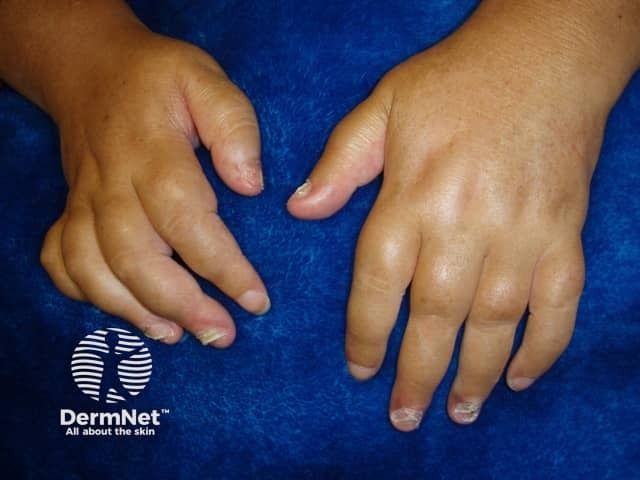- Case-Based Roundtable
- General Dermatology
- Eczema
- Chronic Hand Eczema
- Alopecia
- Aesthetics
- Vitiligo
- COVID-19
- Actinic Keratosis
- Precision Medicine and Biologics
- Rare Disease
- Wound Care
- Rosacea
- Psoriasis
- Psoriatic Arthritis
- Atopic Dermatitis
- Melasma
- NP and PA
- Skin Cancer
- Hidradenitis Suppurativa
- Drug Watch
- Pigmentary Disorders
- Acne
- Pediatric Dermatology
- Practice Management
- Prurigo Nodularis
- Buy-and-Bill
Article
Studies show efficacy of treatments for oral lichen planus
Winston-Salem, N.C.-Two studies published in the April issue of the Archives of Dermatology suggest that oral lichen planus (OLP) responds well to methotrexate and oral erosive lichen planus (OELP) to pimecrolimus, news source Medscape reports.
Winston-Salem, N.C. - Two studies published in the April issue of the Archives of Dermatology suggest that oral lichen planus (OLP) responds well to methotrexate and oral erosive lichen planus (OELP) to pimecrolimus, news source Medscape reports.
According to the OLP study, conducted by researchers at Wake Forest University Health Sciences in Winston-Salem, a laddered therapeutic approach is effective for OLP. Results of the second study, conducted at the University of Nice in France, indicate 1 percent pimecrolimus cream is effective and well-tolerated for OELP, but requires long-term application.
In the Wake Forest study, researchers did a medical-record review of 50 patients with histologically confirmed erosive OLP seen in a dermatology clinic between 1997 and 2005. Patients were treated according to a laddered protocol using the following therapy: topical corticosteroids, 0.05 percent fluocinonide gel, two to three times daily, and 0.5 percent clobetasol gel, two to five times daily; intralesional corticosteroid injection; topical 0.1 percent tacrolimus ointment, two to three times daily, alternating with clobetasol; hydroxychloroquine, 200 mg orally, twice daily; retinoids; methotrexate, 2.5 to 12.5 mg per week, based on creatinine clearance; and thalidomide, 100 mg every night, on average.
Overall, 82 percent of the subjects had greater than 75 percent improvement or clearing of OLP.
In the OELP study, 12 dermatology patients with OELP were randomized to receive 1 percent pimecrolimus cream or its vehicle twice daily for four weeks. Treatment efficacy was quantified using a 12-point clinical score, and blood levels of pimecrolimus were measured on the first, 14th and 28th days.
In the placebo group, total score improved in three patients, but only one had a decrease in score of more than three points. In the pimecrolimus group, the total score improved in five patients, and all five had a decrease in score of more than three points. The pimecrolimus cream was well-tolerated by these patients, with only transient burning sensations reported by two patients. Each of the patients who improved with pimecrolimus had subsequently relapsed by one month after treatment.





